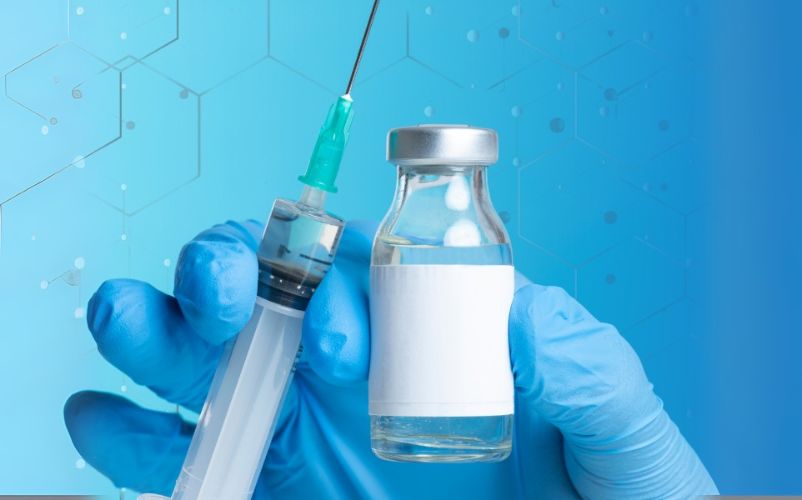Causes for the phenomenon of Low Endotoxin Recovery (LER) and how it differs from typical interference
Endotoxins are pyrogens that can be found in the outer membrane of gram-negative bacteria and can cause fever and sepsis, if they gain access to the human bloodstream. To ensure patient safety, parenterally administered drugs and medical devices are subjected to stringent testing for endotoxin contamination. However, phenomena like low endotoxin recovery and typical interference with the LAL assay may lead to inaccurate testing results [1].
What is low endotoxin recovery?
The term low endotoxin recovery describes the phenomenon of significantly reduced recovery of spiked endotoxin from certain matrices over time. Such reduction of detectable endotoxin over time can lead to inaccurate endotoxin quantification with the Limulus amebocyte lysate (LAL) assay.
What risks is low endotoxin recovery associated with?
The phenomenon of low endotoxin recovery is a concern for manufacturers of parenterally administered drugs, because the ability to detect and quantify naturally occurring endotoxin contaminants in certain matrices may also decrease over time. As a result, the risk of obtaining false-negative results from endotoxin testing may increase.
How is low endotoxin recovery different from typical LAL assay interference?
Both low endotoxin recovery and typical LAL assay interference can lead to inaccurate and unreliable testing results. However, their mechanisms and the strategies for their detection and elimination differ.
Differences in the mechanisms underlying low endotoxin recovery and typical LAL assay interference
Low endotoxin recovery can occur when endotoxin is masked or sequestrated in the matrix of a drug. Drug excipients can play a role in this process by altering the aggregation state of endotoxin, rendering it less accessible or reactive to the LAL reagent. As a result, reduced amount of endotoxin may be detected, even though it is still present in the matrix. Generally, the phenomenon of low endotoxin recovery is time dependent and may also be temperature dependent.
In contrast, in typical LAL assay interference, a substance in the tested sample interferes with the LAL reagent or cascade, inhibiting or enhancing the LAL reaction. An inhibition of the LAL reaction may lead to underestimation of endotoxin and false-negative results. Factors that can inhibit the LAL reaction include a pH outside of the optimal range of 6–8; presence of heavy metals, chelating agents, or enzyme inhibitors; and elevated salt concentrations. An enhancement of the LAL reaction may lead to overestimation of endotoxin content and false-positive results. Factors that can enhance the LAL reaction include (1→3)-β-D-glucans and certain surfactants and proteins. Typical LAL assay interference is generally time independent.
How can low endotoxin recovery and typical LAL assay interference be detected?
The approaches to identifying low endotoxin recovery and typical LAL assay interference also differ. Low endotoxin recovery is detected using hold-time studies, in which a known endotoxin amount is spiked into a drug, and its recovery is determined after predefined time periods. Low endotoxin recovery is observed when recovery decreases significantly over time.
Typical LAL assay interference can be detected using positive and negative controls and spike studies, in which a predetermined amount of endotoxin is spiked into a sample, and its immediate recovery is examined. LAL assay interference is observed when immediate endotoxin recovery is outside of an acceptable range.
How can low endotoxin recovery and typical LAL assay interference be overcome?
To overcome low endotoxin recovery, demasking agents and protocols (aiming to disrupt the interactions between the endotoxin and product matrix), alternative endotoxin sources, and alternative pyrogen tests may be considered [2]. If a spiked sample is exhibiting low endotoxin recovery, unmasking can also be attained by diluting the sample in Lysate Reagent Water and testing it after 24 hours (instead of needing a demasking buffer). Also, lower pH mitigates low endotoxin recovery, so the pH can be lowered during the hold-time study, and then a self-buffering Endotoxin test reagent can be used.
Typical LAL assay interference may be resolved with the help of dilution, adjusting the pH of the LAL reaction to its optimal range, heating, and certain blocking agents [3].
Overall, both low endotoxin recovery and typical LAL assay interference may lead to false-negative results from endotoxin testing, but their mechanisms and the approaches for their detection and elimination differ. Due to the risks associated with false-negative endotoxin testing results, awareness of low endotoxin recovery and LAL assay interference is critical.
References
- von Wintzingerode F. (2016). Low endotoxin recovery, a brief overview. American Pharmaceutical Review. https://www.americanpharmaceuticalreview.com/Featured-Articles/239898-Low-Endotoxin-Recovery-A-Brief-Overview/
- Reich J, Weyer FA, Tamura H, Nagaoka I & Motschmann H. (2019). Low endotoxin recovery-masking of naturally occurring endotoxin. International Journal of Molecular Sciences, 20(4): 838. doi:10.3390/ijms20040838
- Sandle T. (2021). Bacterial Endotoxin Test using LAL methodology: overcoming interfering factors. European Pharmaceutical Review. https://www.europeanpharmaceuticalreview.com/article/161082/bacterial-endotoxin-test-using-lal-methodology-overcoming-interfering-factors/



